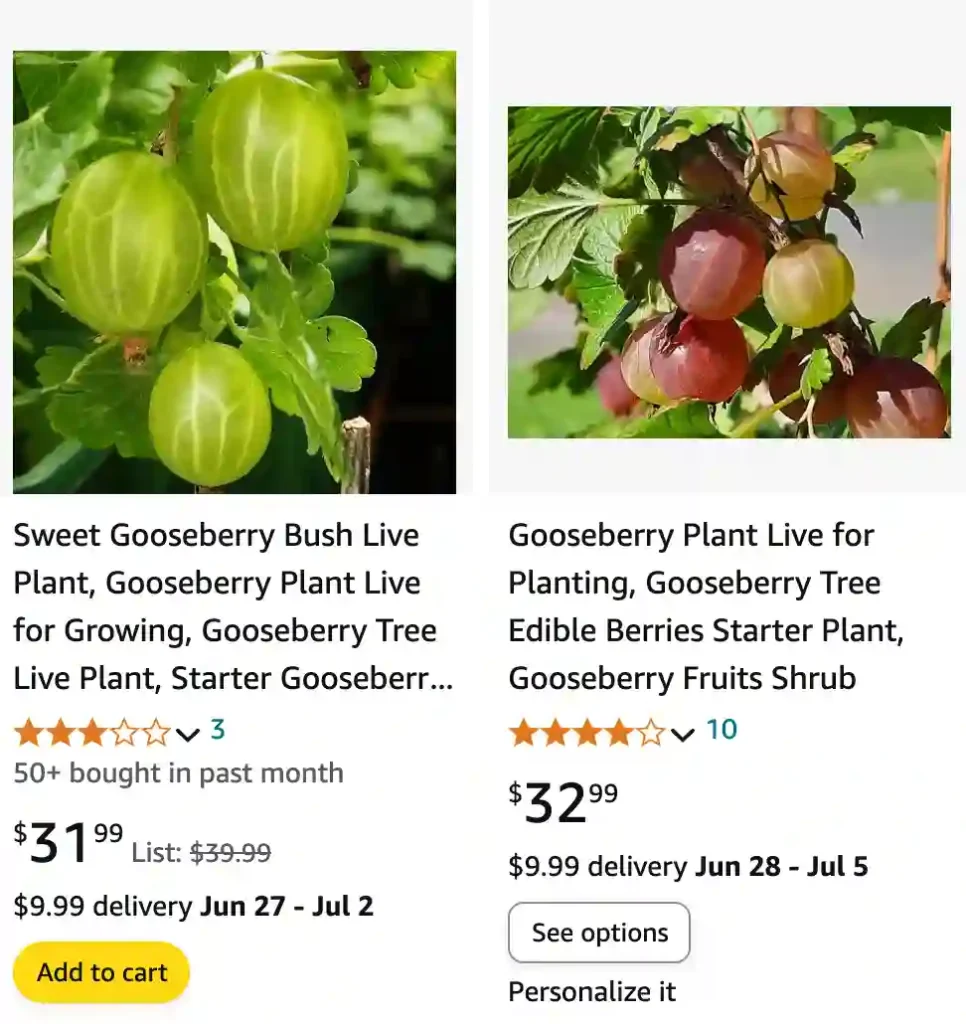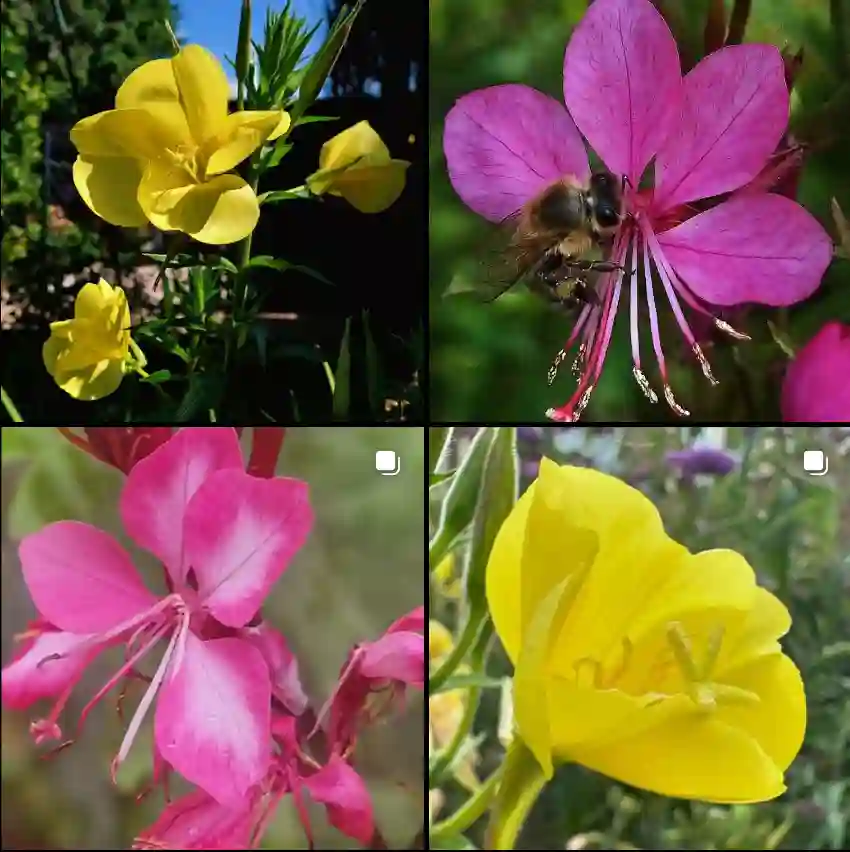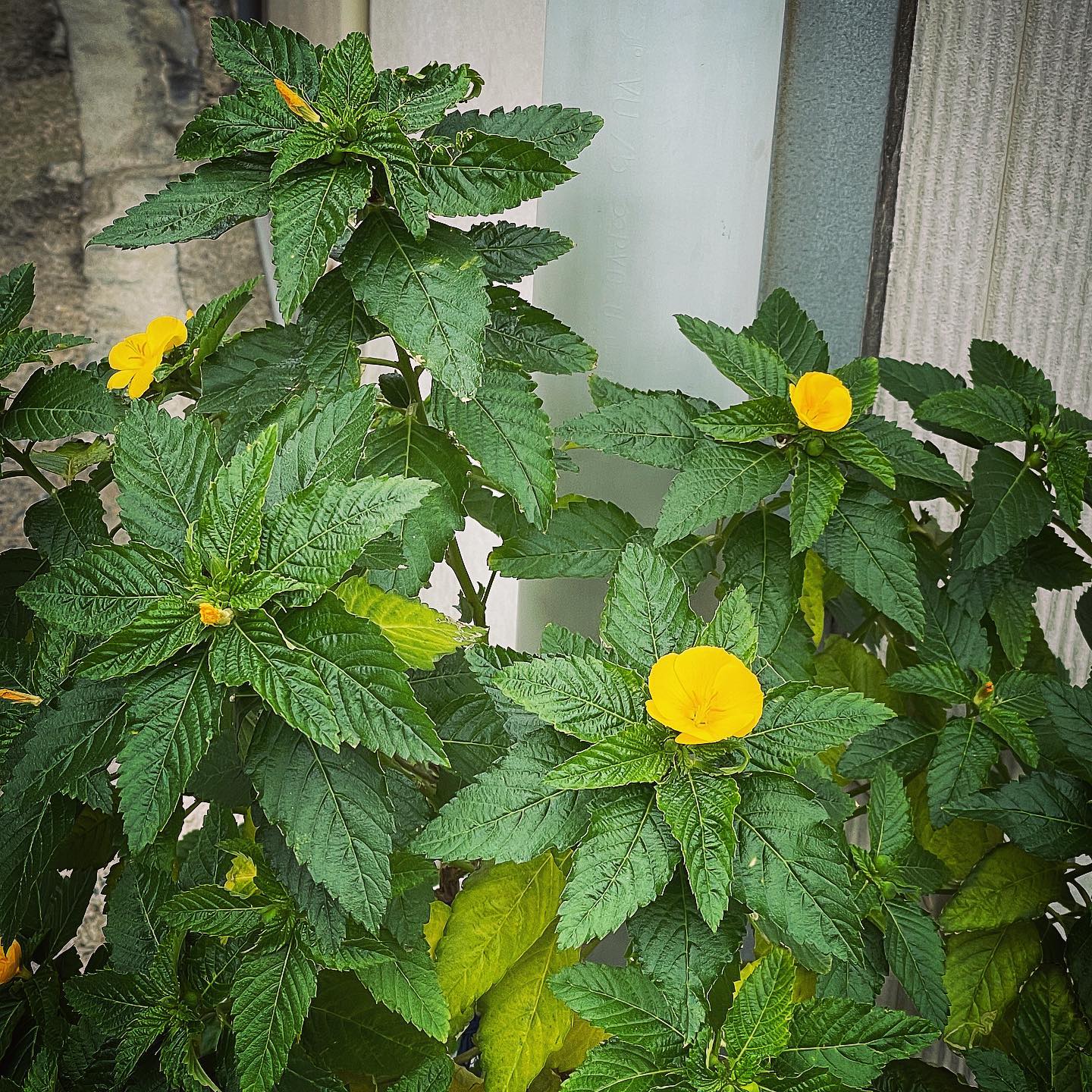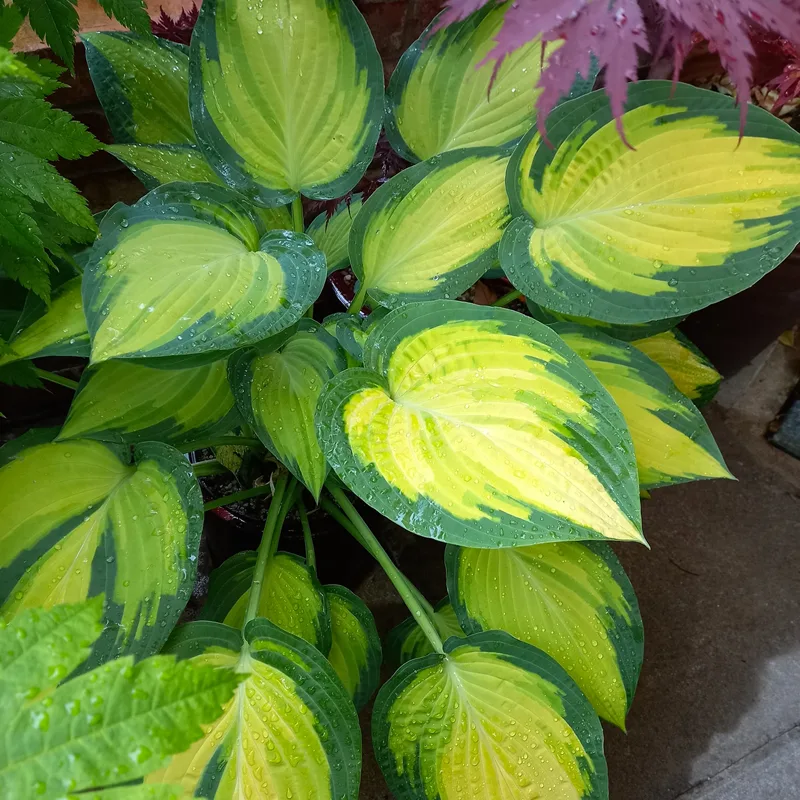
Exploring the Grossulariaceae Family: A Focus on Ribes
The Grossulariaceae family, often overshadowed by more popular plant families, holds a special place in my gardening heart. Comprising mainly of the genus Ribes, this family includes a variety of plants that are both beautiful and beneficial. In this article, I’ll dive into the captivating world of Ribes, sharing my experiences and insights on its varieties, cultivation, and uses.
What is Grossulariaceae?
Grossulariaceae, commonly known as the currant family, consists of approximately 196 species primarily found in the Northern Hemisphere. This family is known for its fruit-bearing shrubs, which produce small, tart berries. The most recognized genus in this family is Ribes, which encompasses several well-known species like blackcurrant (Ribes nigrum), redcurrant (Ribes rubrum), and gooseberries (Ribes uva-crispa).
A Diverse Genus
Ribes is a large genus, encompassing 196 species. These species are primarily found in the temperate regions of the Northern Hemisphere, though some extend south into the Andes Mountains in South America. This wide distribution has led to a remarkable diversity within the genus, with species varying greatly in their growth habits, leaf shapes, flower colors, and fruit characteristics.
- Ribes acerifolium Howell
- Ribes achurjanii Mulk.
- Ribes aciculare Sm.
- Ribes affine Kunth
- Ribes albifolium Ruiz & Pav.
- Ribes alpestre Wall. ex Decne.
- Ribes alpinum L. Plant FAQs: Alpine Currant – Ribes Alpinum
- Ribes amarum McClatchie, bitter gooseberry, native to California
- Ribes amazonica Weigend & E.Rodr.
- Ribes ambiguum Maxim.
- Ribes americanum Mill.
- Ribes anatolicum Behçet
- Ribes andicola Jancz.
- Ribes armenum Pojark.
- Ribes atropurpureum C.A.Mey.
- Ribes aureum Pursh Plant FAQs: Ribes Aureum
- Ribes austroecuadorense Freire-Fierro
- Ribes × berisioides Jancz.
- Ribes bicolor Phil.
- Ribes biebersteinii Berland. ex DC.
- Ribes binominatum A.Heller, trailing gooseberry, native to northwestern North America
- Ribes bogotanum Jancz.
- Ribes bolivianum Jancz.
- Ribes brachybotrys (Wedd.) Jancz.
- Ribes bracteosum Douglas
- Ribes brandegeei Eastw.
- Ribes burejense F.Schmidt
- Ribes caldasiense Weigend
- Ribes californicum Hook. & Arn., California gooseberry
- Ribes canescens Pittier
- Ribes canthariforme Wiggins
- Ribes catamarcanum Jancz.
- Ribes cereum Douglas
- Ribes ceriferum Coville & Rose
- Ribes chachapoyense Weigend & Breitkopf
- Ribes chihuahuense Britton
- Ribes ciliatum Humb. & Bonpl. ex Schult.
- Ribes colandina Weigend
- Ribes contumazensis Weigend
- Ribes costaricensis Weigend
- Ribes cucullatum Hook. & Arn.
- Ribes cuneifolium Ruiz & Pav.
- Ribes curvatum Small
- Ribes cynosbati L.prickly gooseberry, native to eastern North America
- Ribes davidii Franch.
- Ribes densiflorum Phil.
- Ribes diacantha Pall.
- Ribes dikuscha Fisch. ex Turcz.
- Ribes divaricatum Douglas, spreading gooseberry, native to western North America
- Ribes dombeyanum (Spach) Jancz.
- Ribes dugesii Greenm.
- Ribes echinellum (Coville) Rehder, Miccosukee gooseberry, native to Florida
- Ribes ecuadorense Jancz.
- Ribes elegans Jancz.
- Ribes erectum Freire-Fierro
- Ribes erythrocarpum Coville & Leiberg
- Ribes fargesii Franch.
- Ribes fasciculatum Siebold & Zucc.
- Ribes fontaneum Bochkarn.
- Ribes fontinale Britton
- Ribes formosanum Hayata
- Ribes fragrans Pall.
- Ribes franchetii Jancz.
- Ribes frankei Weigend & Breitkopf
- Ribes fujisanense S.Sakag. & M.Oishi
- Ribes fuyunense T.C.Ku & Konta
- Ribes giraldii Jancz.
- Ribes glabricalycinum L.T.Lu
- Ribes glabrifolium L.T.Lu
- Ribes glaciale Wall.
- Ribes glandulosum Weber
- Ribes grande Rose
- Ribes grandisepalum Durán-Esp. & Avendaño
- Ribes graveolens Bunge
- Ribes griffithii Hook.f. & Thomson
- Ribes henryi Franch.
- Ribes heterotrichum C.A.Mey.
- Ribes himalense Royle ex Decne.
- Ribes hirtellum Michx.
- Ribes hirticaule J.F.Macbr.
- Ribes hirtum Humb. & Bonpl. ex Schult.
- Ribes horridum Rupr. ex Maxim.
- Ribes huancabambense Weigend & Breitkopf
- Ribes hudsonianum Richardson
- Ribes humile Jancz.
- Ribes hunanense Chang Y.Yang & C.J.Qi
- Ribes incarnatum Wedd.
- Ribes incertum J.F.Macbr.
- Ribes indecorum Eastw.
- Ribes inerme Rydb., whitestem gooseberry, native to northwestern North America
- Ribes integrifolium Phil.
- Ribes janczewskii Pojark.
- Ribes japonicum Maxim.
- Ribes khorasanicum Saghafi & Assadi
- Ribes kialanum Jancz.
- Ribes komarovii Pojark.
- Ribes lacustre (Pers.) Poir., swamp gooseberry, native to northwestern North America
- Ribes lasianthum Greene, alpine gooseberry, native to California
- Ribes latifolium Jancz.
- Ribes laurifolium Jancz.
- Ribes laxiflorum Pursh
- Ribes lehmannii Jancz.
- Ribes leptanthum A.Gray, trumpet gooseberry, native to southwestern North America
- Ribes leptostachyum Benth.
- Ribes lobbii A.Gray, gummy gooseberry, native to western North America
- Ribes longeracemosum Franch.
- Ribes luridum Hook.f. & Thomson
- Ribes luteynii Weigend
- Ribes macrobotrys Ruiz & Pav.
- Ribes macrostachyum Jancz.
- Ribes madrense Coville & Rose
- Ribes magellanicum Poir.
- Ribes malvaceum Sm.
- Ribes malvifolium Pojark.
- Ribes mandshuricum (Maxim.) Kom.
- Ribes marshallii Greene, Hupa gooseberry, native to western North America
- Ribes maximoviczianum Kom.
- Ribes maximowiczii Batalin
- Ribes mediatum Měsíček & Soják
- Ribes melananthum Boiss. & Hohen.
- Ribes menziesii Pursh, canyon gooseberry, native to California
- Ribes mescalerium Coville
- Ribes meyeri Maxim.
- Ribes microphyllum Kunth
- Ribes missouriense Nutt., Missouri gooseberry, native to eastern North America
- Ribes montigenum McClatchie, mountain gooseberry, native to western North America
- Ribes moupinense Franch.
- Ribes multiflorum Kit. ex Schult.
- Ribes nanophyllum Freire-Fierro & Endara
- Ribes neglectum Rose
- Ribes nelsonii Coville & Rose
- Ribes nevadense Kellogg
- Ribes nigrum L.
- Ribes niveum Lindl.
- Ribes orientale Desf.
- Ribes orizabae Rose
- Ribes ovalifolium Jancz.
- Ribes oxyacanthoides L., Canadian gooseberry, native to northern North America
- Ribes pallidiflorum Pojark.
- Ribes × pallidum Otto & A.Dietr.
- Ribes parvifolium Phil.
- Ribes pentlandii Britton
- Ribes peruvianum Jancz.
- Ribes petraeum Wulfen
- Ribes pinetorum Greene
- Ribes polyanthes Phil.
- Ribes praecox J.F.Macbr.
- Ribes pringlei Rose
- Ribes procumbens Pall.
- Ribes pseudofasciculatum K.S.Hao
- Ribes pulchellum Turcz.
- Ribes punctatum Ruiz & Pav.
- Ribes quercetorum Greene, rock gooseberry, native to California
- Ribes roezlii Regel, Sierra gooseberry, native to western North America
- Ribes rotundifolium Michx.
- Ribes rubrisepalum L.T.Lu
- Ribes rubrum L.
- Ribes sachalinense (F.Schmidt) Nakai
- Ribes sanchezii Weigend
- Ribes sanguineum Pursh
- Ribes sardoum Martelli
- Ribes saxatile Pall.
- Ribes sericeum Eastw., Lucia gooseberry, native to California
- Ribes setchuense Jancz.
- Ribes sinanense F.Maek.
- Ribes soulieanum Jancz.
- Ribes speciosum Pursh, fuchsia-flowered gooseberry, native to California
- Ribes spicatum E.Robson
- Ribes steinbachiorum Weigend & Binder
- Ribes stenocarpum Maxim.
- Ribes sucheziense Jancz.
- Ribes sylvestre F.Dietr.
- Ribes takare D.Don
- Ribes tenue Jancz.
- Ribes thacherianum (Jeps.) Munz, Santa Cruz gooseberry, native to Santa Cruz Island, California
- Ribes tianquanense S.H.Yu & J.M.Xu
- Ribes tolimense Cuatrec.
- Ribes tortuosum Benth.
- Ribes trilobum Meyen
- Ribes triste Pall.
- Ribes tularense (Coville) Standl., Sequoia gooseberry, native to California
- Ribes tumerec Weigend & Breitkopf
- Ribes turbinatum Pojark.
- Ribes uva-crispa L.
- Ribes valdivianum Phil.
- Ribes × varoi Blanca
- Ribes velutinum Greene, desert gooseberry, native to western North America
- Ribes viburnifolium A.Gray Plant FAQs: Ribes Viburnifolium, Island gooseberry, native to California
- Ribes victoris Greene, Victor’s gooseberry, native to California
- Ribes vilmorinii Jancz.
- Ribes viridiflorum (W.C.Cheng) L.T.Lu & G.Yao
- Ribes viscosissimum Pursh
- Ribes watsonianum Koehne
- Ribes weberbaueri Jancz.
- Ribes wolfii Rothr.
- Ribes xizangense L.T.Lu
The Beauty of Berries
One of the main reasons I love Ribes is the visual appeal of the plants. Their delicate flowers, which typically bloom in spring, attract pollinators and add a splash of color to the garden. The fruit, whether red, black, or green, hangs in clusters, creating a stunning display in summer.
Growing Ribes can also be a delightful experience. I’ve had my fair share of successes and failures, but the rewards are worth the effort. The plants are relatively easy to cultivate, preferring well-drained soil and plenty of sunlight. They thrive in USDA hardiness zones 3 to 8, making them suitable for a wide range of climates.
Cultivating Ribes
When I first started growing Ribes, I followed a few essential steps that helped me achieve success:
Choosing the Right Varieties
Not all Ribes are created equal, and choosing the right variety for your garden is crucial. For beginners, I recommend starting with redcurrants or gooseberries. They are generally hardier and more forgiving than blackcurrants, which can be more susceptible to diseases. I started with Ribes rubrum for its sweetness and ease of care, and it has become a staple in my garden.
Soil and Sunlight Requirements
Ribes thrive in well-drained soil enriched with organic matter. I often amend my garden soil with compost to boost fertility. Additionally, these plants love sunlight, so I make sure to plant them in an area that receives at least 6 to 8 hours of direct sunlight daily. Proper sunlight not only promotes healthy growth but also enhances the flavor of the berries.
Pruning and Maintenance
One aspect of caring for Ribes that I learned over time is the importance of pruning. Regular pruning helps maintain plant shape and promotes better air circulation, reducing the risk of diseases. I usually prune my Ribes plants in late winter or early spring, removing any dead or damaged branches to encourage new growth.
The Benefits of Ribes
Apart from their aesthetic appeal, Ribes plants offer numerous benefits. The berries are packed with vitamins and antioxidants, making them a healthy addition to any diet. For instance, blackcurrants are renowned for their high vitamin C content, and I’ve found that incorporating them into my smoothies or baked goods has boosted my overall health.
Additionally, Ribes can play a vital role in sustainable gardening practices. These plants attract beneficial insects, which can help pollinate other crops in your garden. I’ve noticed an increase in pollinator activity since adding Ribes to my landscape, which has positively impacted my entire garden ecosystem.
Culinary Uses of Ribes
I cannot talk about Ribes without mentioning the culinary delights they bring. The berries are versatile and can be used in various recipes. I enjoy making jams and jellies, where the tartness of the berries shines through. A simple blackcurrant jam has become a favorite in my household, often served with fresh bread or pastries.
Moreover, I love experimenting with Ribes in savory dishes. For instance, a redcurrant sauce pairs beautifully with roasted meats, adding a touch of acidity that balances rich flavors. I also enjoy making refreshing beverages like currant smoothies or homemade syrups for cocktails.
FAQs
What is a Gooseberry?
A gooseberry is a fruit-bearing shrub, primarily from two species: Ribes uva-crispa, native to Europe, Africa, and Asia, and Ribes hirtellum, the American gooseberry. Hybrids of these species are common in modern cultivars. Other plants, unrelated to the genus Ribes, are also called gooseberries due to their similar fruit:
Byrsonima lucida, the “Long Key” gooseberry, native to the Caribbean
Ceylon gooseberry, a species of Dovyalis, native to Sri Lanka and southern India.
Chinese gooseberry or kiwifruit, the edible berry of a cultivar group of the woody vine Actinidia deliciosa and hybrids between deliciosa and other Actinidia species.
Curio herreanus, a succulent native to South America that superficially resembles gooseberry.
Pereskia aculeata, the Barbados gooseberry, an unusual cactus.
Within family Phyllanthaceae: Phyllanthus emblica, the Indian gooseberry or emblic
Jamaican gooseberry tree, an herb-like plant.
The “Star gooseberry”, meaning either: Phyllanthus acidus, the “Otaheite gooseberry”, the only Phyllanthoideae with edible fruit, or
Sauropus androgynus, a shrub grown in some tropical regions as a leaf vegetable.
Within family Solanaceae: Physalis angulata, also called balloon or cutleaf groundcherry.
Physalis peruviana, Cape gooseberry, indigenous to South America and South Africa.
Withania somnifera, Poison gooseberry.
Where to Buy Gooseberries?
Gooseberries can be purchased at local nurseries, garden centers, and specialty fruit markets. Online stores specializing in plants or seeds often stock gooseberry bushes or seeds.
How to Care for a Gooseberry Bush?
Gooseberry bushes thrive in full sun to partial shade and prefer well-drained, fertile soil. Regular watering and annual pruning help maintain healthy growth and fruit production. Mulching around the base helps retain moisture and control weeds.
How to Propagate Gooseberry Bushes?
Gooseberries can be propagated through cuttings, layering, or division. Hardwood cuttings are taken in late autumn or winter, while layering involves bending a branch to the soil and letting it root before separating it.
What to Plant with Gooseberries?
Gooseberries pair well with companion plants like chives, thyme, and strawberries, which help deter pests and enhance soil quality. Avoid planting near plants susceptible to similar diseases, such as tomatoes or potatoes.
What Does Gooseberry Smell Like?
The aroma of gooseberries is fresh and tangy, often described as a mix of citrus and green notes. Some varieties have a slightly sweet scent.
Do Deer Eat Gooseberry Bushes?
Yes, deer may nibble on gooseberry bushes, particularly the leaves and young shoots. Protective fencing or netting can help prevent damage.
Is a Ground Cherry a Gooseberry?
No, ground cherries (Physalis peruviana) are not true gooseberries. While they share a similar name, ground cherries belong to the Solanaceae family and produce small, golden fruit in papery husks.
What Color is a Gooseberry?
Gooseberries vary in color depending on the variety, ranging from green and yellow to red and purple when ripe.
How to Make Gooseberry Jam?
To make gooseberry jam, simmer cleaned and topped gooseberries with sugar and a splash of water until thickened. For a smoother texture, mash the fruit or strain out the seeds before cooking.
What is Gooseberry Pie?
Gooseberry pie is a classic dessert made with a sweet or tart filling of gooseberries, often combined with sugar, cornstarch, and spices, baked in a pastry crust. It is a favorite in many parts of Europe and North America.
Conclusion: The Allure of Grossulariaceae
In conclusion, the Grossulariaceae family, particularly the Ribes genus, is a treasure trove for any gardener or culinary enthusiast. With their stunning visual appeal, ease of cultivation, and health benefits, Ribes plants deserve a place in every garden. My journey with these delightful berries has not only enriched my gardening experience but also enhanced my culinary repertoire. Whether you’re a seasoned gardener or just starting, I encourage you to explore the wonders of Ribes—you won’t be disappointed!
If i die, water my plants!



